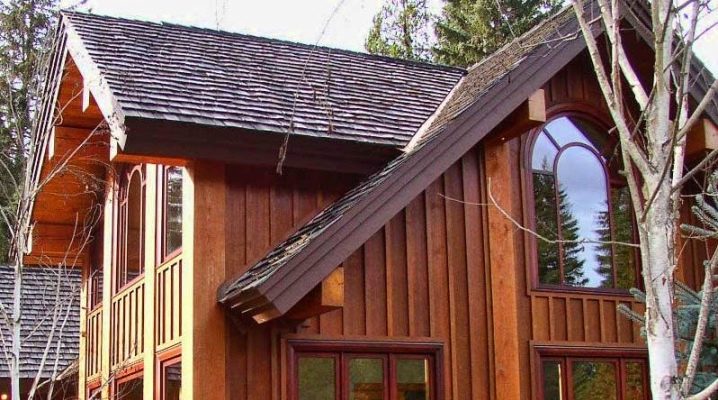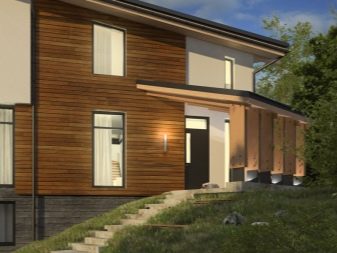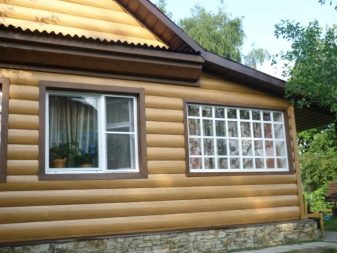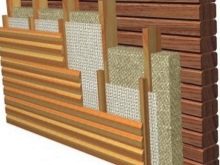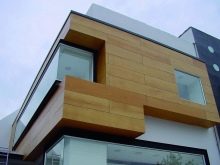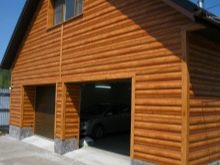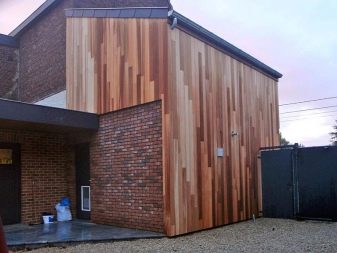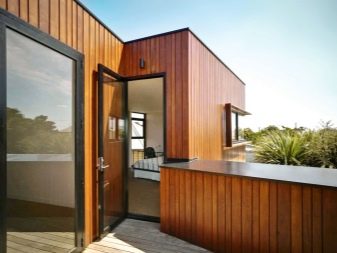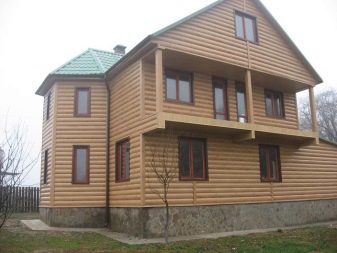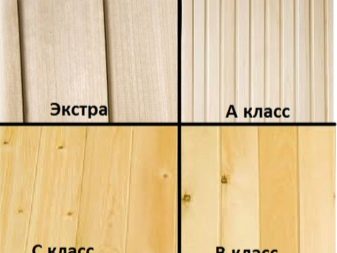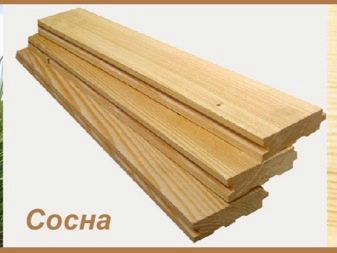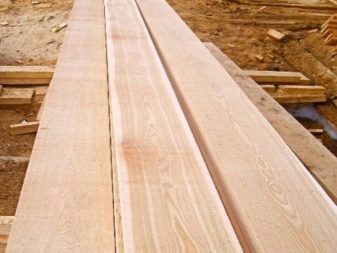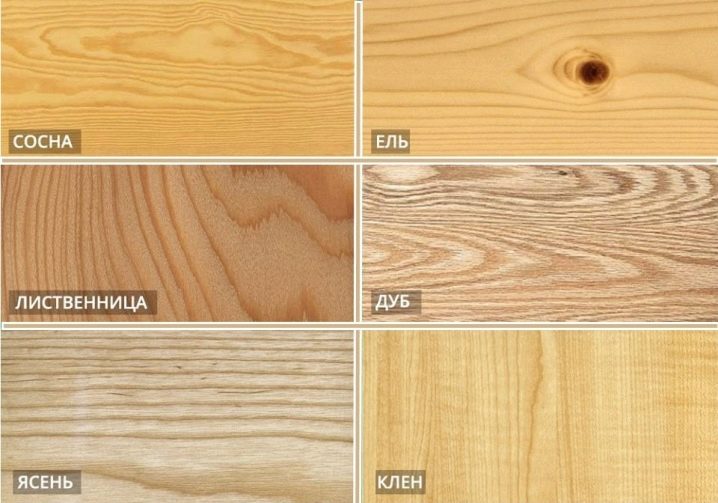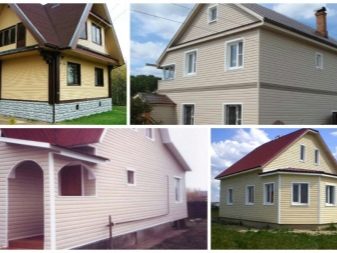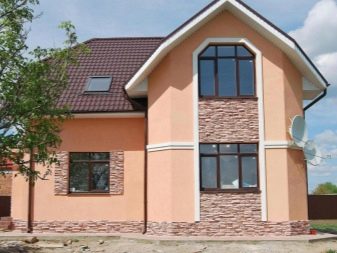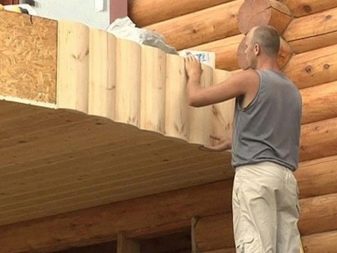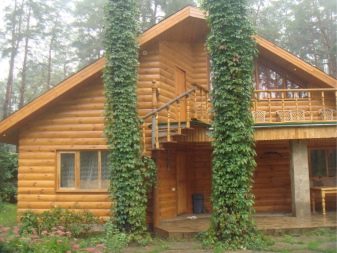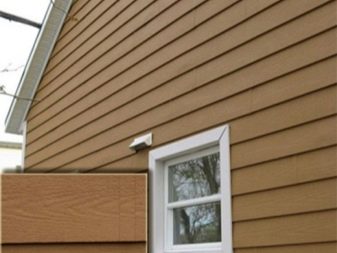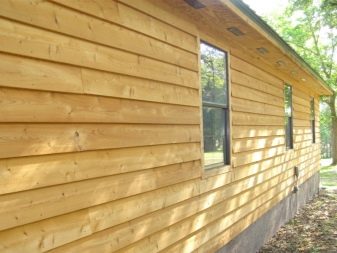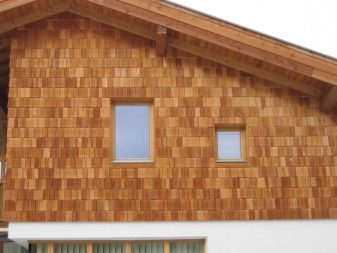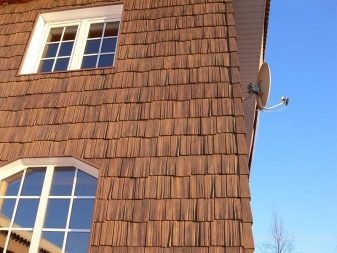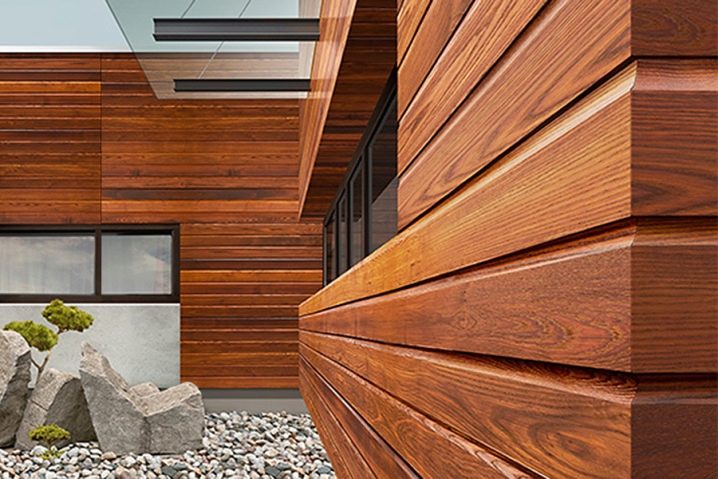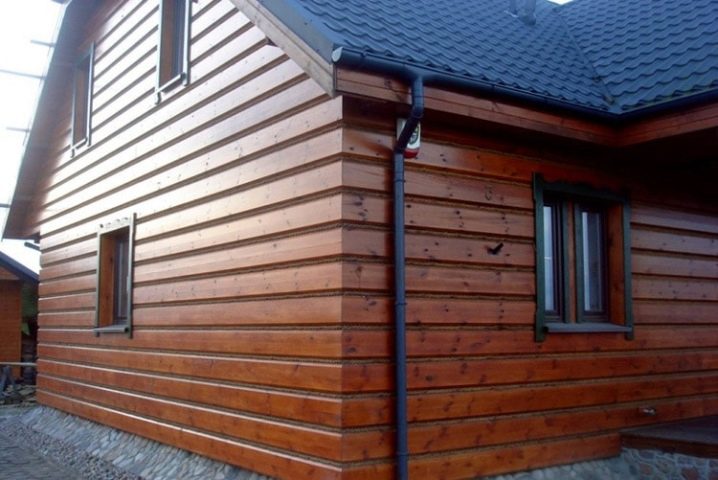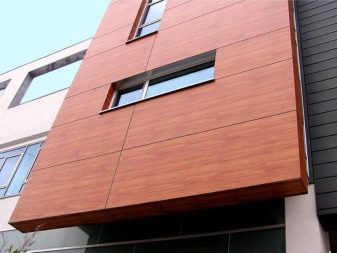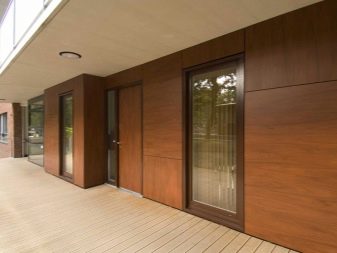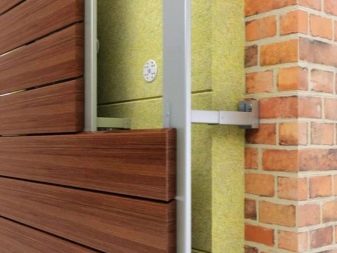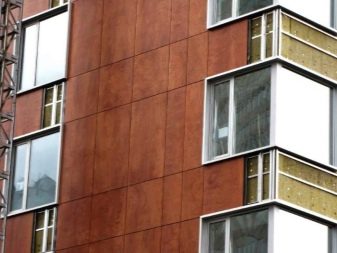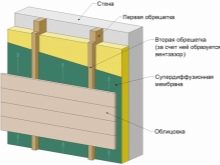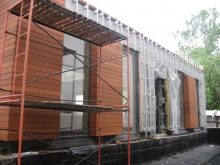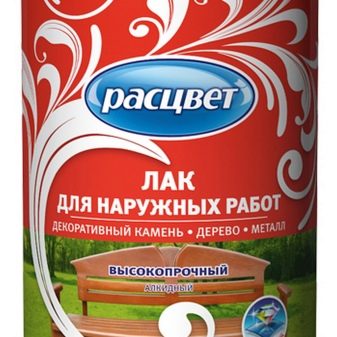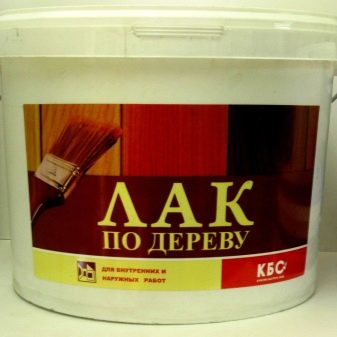Subtleties of the process of finishing the facade with wood
The “stone jungles” of big cities draw all the energy out of a person, so at least on weekends you want to get closer to nature. Well, if you have your own cottage with a wooden house or a private cottage. Natural materials of such a home will help you relax in environmentally friendly conditions. And there is simply nothing more comfortable than a room with a wooden finish. The wooden facing of the house will organically fit in both the minimalistic style of the building, and is suitable for ordinary cottages or stylized "antique" cottages.
The facade of the house can be called a business card of every owner, so it is worth taking the exterior decoration of the house with full seriousness. In addition to the aesthetically attractive appearance of the building, it is also important that the house is warm and environmentally friendly to live in. That is why stop your choice on the version of the facade decoration of wood.
If you build a wooden house due to the high cost of the material is not available to everyone, then almost any summer resident can afford to sheathe the house with wooden panels. Technically, the process of lining the tree outside is not so complicated, so even an unprepared master will be able to complete the facade work as soon as possible.
Advantages and disadvantages
Wood trim, like any other finishing material, has its pros and cons.
Among the advantages we note:
- environmental friendliness;
- the possibility of combining with other finishing materials in lining - for example, stone or brick;
- the ability to "hide" under the tree the disadvantages of the supporting structures and a thick layer of insulation;
- at competent processing wooden facing reliably protects the house from negative external influences;
- no need to install ventilation ducts, since the wooden surface itself is well ventilated;
- elegance and surface respectability;
- variety of design solutions.
The disadvantage, in fact, is one - the flammability of a material such as wood. But it is easily solved with the help of special protective coatings, which from year to year will have to be applied to the structure.
Choice of breed material
Before starting the facade work, decide what type of wood you will use, because each material has its own characteristics, advantages and disadvantages. Repeat and from the general stylistics and the direction of design that the house looked most harmoniously and effectively.
The choice of wood is very important. Do not overestimate the exotic woods - stop your choice on the Russian tradition in the construction of log cabins. Only trees growing in central Russia will be suitable for any climate in our country.
The pine has soft wood, so the process of its processing for the master is simplified to the maximum. Experts recommend using this material in humid climates, as resinous conifers are resistant to the negative effects of moisture and decay.
Cedar has the strongest and most durable wood. It is also distinguished by an unusual yellow tint, which can be effectively beaten up while developing the design of your home.
And an elite material that is far from being accessible to everyone due to the high cost can be considered an oak tree. It is distinguished by high strength and durability, besides oak wood can have various shades - from golden yellow to dark brown, so you probably will not have problems with a choice.
Larch wood is very durable yellowish. Due to the durability of such material, it is often used for the construction of large-scale objects - for example, temples. Unfortunately, with time under the influence of the environment and precipitation larch wood can darken, so take this into account when building your house.
Spruce has a light structure, well glued, but may eventually begin to rot without regular maintenance and treatment with special means. Alder has a soft structure and is well processed, but is also easily rotten. Innovation in the building materials market is a thermally modified wood, which is obtained after processing wood under high pressure.
Types of plating
Exterior finishes, as is known, can be made using wet technology (for example, using plaster) or mounted technology (cladding with wooden panels, siding or other finishing materials).
- Block house
In appearance, this finishing material is a log treated with an antiseptic and varnish, divided in half lengthwise. The flat side it is attached to the facade due to the groove-studs on the sides.Such installation technology allows you to assemble a house as soon as possible. If you use screws or nails, be sure to treat them with a special anti-corrosion compound.
- Siding
A very popular and inexpensive finish option - wooden siding. It can be in the form of a molded profile of several parts to be joined, or it can be made of solid wooden board. And the ease of installation allows you to finish even an unprofessional builder - of course, with the help of competent instructions and professional advice that can be found on the Internet.
- Wooden shingles
The wooden shingles look very impressive. In addition, such a finishing material will significantly extend the life of the structure and protect it from the effects of adverse weather conditions. Finishing such a facade is subject only to specialists who have undergone special training, so you should not experiment and save on the services of professionals.
- Thermotree
This material can be used not only for the manufacture of decorative elements, such as stairs, beams, arbors, rafters, panels.Thermal wood can be used as a facade finishing material. The wood subjected to special heat treatment is used to reliably protect the house from negative external influences, humidity and temperature drops. After all, since the times of Ancient Russia, burned wood was used to increase the strength of structures.
- Euro Lining
The lining of the building by eurolining is simple - such work can be done independently, since the boards are connected with the fastening-tongue fastening system. Similar exterior finish looks beautiful and at the same time affordable. This material is distinguished by low weight, which means faster installation speed.
- HPL panels
This material is a combined finishing raw material obtained by pressing cellulose and wood fibers, which are impregnated with heat-shrinkable resins to improve the technical characteristics. Such a material is produced at a high temperature, so the sheets are obtained superstrong.
As advantages over other materials, resistance to shock and mechanical damage, as well as negative environmental effects can be noted.Such a facade will serve you faithfully for many years, and taking care of it will take a minimum of times and finances.
Since HPL panels are lighter than other facade materials, they are often used to finish large surfaces. A wide range of colors and a rich selection of textures will allow you to choose the panel to any style of interior. Another advantage is the “self-sufficiency” of the panels, that is, you will not need plaster or additional processing of such a facade.
- Ventilated facade
Another innovation is the ventilated facade, when brackets for the batten are first mounted on the walls, then insulation and sheathing of the timber is put. As a result, an air cushion is formed inside, which ensures natural ventilation of the wooden facade.
A membrane is attached to the crate to protect the insulation from condensation and the formation of fungus. Note that the absorbent side is attached to the wall of the house. And at the end of the wooden finishing material is fixed on the crate with special fasteners.
Finishing
After completion of the installation, be sure to cover the wooden surface with special protective agents.Facade lacquer can be alkyd or polyurethane with antiseptic fillers against the formation of fungus and the appearance of harmful insects. All listed characteristics has a yacht varnish.
Oil lacquer will save money, it is resistant to sunlight, precipitation and temperature changes. Alkyd varnish will help prevent cracks in the wood. Water based varnish is the most environmentally friendly and harmless. In this case, the wooden surface treated with such a tool will be reliably protected from external influences and mechanical damage.
When processing the facade with varnish, read the instructions and take into account the wishes of manufacturers, at what temperature should it be applied, so that the varnish is absorbed according to the rules and, accordingly, the quality of the wooden finish of the house is not affected.
Another popular option for facade coating is the so-called azure coating., which protects the facade from the effects of rain and sun. In this case, you can give the house a variety of color nuances. The protective properties of azure persist for about 5 years, after which the treatment is repeated.
How to make the installation of a block house, see the video below.
